STRESSES AND STRAINS
Liturgy: The Ritualist Controversy
- Anglo-Catholicism began to make its mark in American Church in the 1840s; (Muhlenberg had already in the late ‘20s begun to used flowers, candles, colors and music to enhance the service for esthetic reasons, and this had influence on others, preparing the way for greater ritual – but he was not really a partisan.)
- The Tractarians in England were not especially interested in (actually deprecated) innovations in the liturgy, but their emphasis on the ancient Church opened doors which some took quite seriously and others pursued for largely sentimental reasons: namely, recovering the practices and rituals of the Roman Church
- The Church of the Advent in Boston was founded in 1844, and became the vanguard for what was called “ritualism” – the Rector William Croswell preached in a surplice, used a stone altar and placed candles and a crucifix on it. The Bishop refused to visit this parish as long as these things stood – he was deeply “grieved and pained” by such practices.
- A furor began to develop in what was, at the time, a very dominant low-church environment: A Virginia professor would come to write in 1866 that “ritualism seems to be spreading, sweeping over the Church.”
-
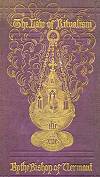 The Presiding Bishop, John Henry Hopkins, was drawn into the
struggle and took the side of innovators. He wrote a book
entitled The Law of Ritualism. He thought that
diversity was a good thing, thought the new practices enriching,
and prophesied that such practices would one day be broadly
accepted.
The Presiding Bishop, John Henry Hopkins, was drawn into the
struggle and took the side of innovators. He wrote a book
entitled The Law of Ritualism. He thought that
diversity was a good thing, thought the new practices enriching,
and prophesied that such practices would one day be broadly
accepted. - This book drew sharp fire from the majority of the Bishops.
- In 1868, the General Convention was presented with a report that
proposed a canon to forbid 11 practices:
- incense
- placing a crucifix anywhere in the Church
- processional crosses
- using candles (except for necessity)
- elevation of the elements
- mixing water with wine
- washing the priest’s hands
- bowing, genuflecting, reverences, kissing the altar, kneeling except by rubric
- permitting any unordained person to assist the priest
- using prayers, collects, epistles or gospels not provided in the BCP
- celebrating or receiving communion alone.
- It also proposed legislation prohibiting the priest from introducing choral services without approval of the vestry, forbidding surpliced choirs, forbidding chancels to be arranged so as to prevent the minister from officiating at the right end of the altar, forbidding vestments other than white surplices, black or white stoles, black gowns, preaching tabs, or black cassocks not reaching below the ankles.
-
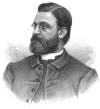 General Convention passed a very mild resolution instead –
largely due to the calm and reasonable pleading of
the Rev.
James DeKoven (Nashotah) who persuaded the Convention that
permissiveness in this area was part of the COMPREHENSIVENESS of
Anglicanism.
General Convention passed a very mild resolution instead –
largely due to the calm and reasonable pleading of
the Rev.
James DeKoven (Nashotah) who persuaded the Convention that
permissiveness in this area was part of the COMPREHENSIVENESS of
Anglicanism. - 1874: The General Convention passed a restrictive Canon which forbade elevation, acts of adoration such as genuflection, and “all other like acts not authorized” by rubric. It provided for disciplinary action by the Bishop where there were recalcitrant priests.
- The canon remained in effect for 30 years – but it did not stem the spread of enriched ritual and was repealed in 1904.
Theology: The Reformed Episcopal Church
In the 1870s another controversy arose – this time among the low-churchmen. The Prayer Book rite of Baptism spoke of “regeneration.”
“Seeing now dearly beloved brethren that this Child is regenerate and grafted into the body of Christ’s Church, let us give thanks unto Almighty God for these benefits; and with one accord make our prayers unto him, that this Child may lead the rest of his life according to this beginning.”
“Regenerate” means, in this context, simply “born again.”
Some churchmen, however, took regeneration to mean that an instantaneous change took place in the recipient with respect to his or her moral character, and they disagreed.
Some clergy dropped the word from their administration of baptism. Charles Cheney, a priest of Chicago, was brought to trial in 1871 and suspended for doing precisely this. He persisted in this practice of dropping “regenerate” and was deposed.
At the General Convention of 1871, the Bishops issued a mild statement clarifying that moral change was not what the Church meant by “regeneration.”
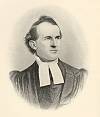 The Rt Rev George Cummins – assistant bishop of KY – was incensed
by both the growth of ritualism and the treatment of Cheney and the
whole issue around regeneration. The last straw occurred when he
participated in communion at a Presbyterian Church (NY, Oct 1873)
and was chastised by the English Bishop of Zanzibar.
The Rt Rev George Cummins – assistant bishop of KY – was incensed
by both the growth of ritualism and the treatment of Cheney and the
whole issue around regeneration. The last straw occurred when he
participated in communion at a Presbyterian Church (NY, Oct 1873)
and was chastised by the English Bishop of Zanzibar.
Nov 1873: Cummins met with some 8 clergy and 16 laymen in NY and formed a new Church, known as the Reformed Episcopal Church. They took as their own the Proposed Book of 1785!
Mission: The Diocese of Dallas
- Bishop Gregg of the Diocese of Texas put before his Convention a proposal to create a division in the Diocese and create a new missionary district.
- The proposal went to the General Convention of 1871, but was turned down.
- 1874: with more planning and a dynamic presentation by Gregg, the General Convention, meeting in NY, decided to create two new missionary districts – Northern Texas and Western Texas.
- The Bishops immediately elected Alexander Charles Garrett to be the new missionary Bishop of Northern Texas.
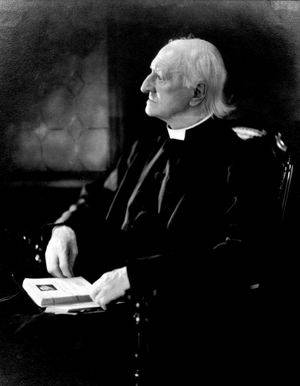
Bishop Alexander Charles Garrett in 1923
ABOUT BISHOP GARRETT:
- Born Nov 4 1832 to a priest in Ireland, Ballymote, one of 15 children
- Attended Trinity College, Dublin, working his way through as a tutor
- Married Letitia Hope in 1854 (married for 55 years!)
- Ordained priest in July, 1857
- 1858: accepted a call to British Columbia – traveled 16,000 miles, only to find that when he arrived, there was no position for him.
- Taught Native American children to get by – until they were killed by an outbreak of smallpox
- Answered a call to St. James Parish in San Francisco – but the church was shortly thereafter foreclosed
- 1872: Bp Clarkson of Nebraska heard him preach and called him to be Dean of the Cathedral in Omaha, NE
Garrett was an Anglo-Catholic, a scholar, a moving speaker, and motivated by mission;
Given his consternation at the ritualist controversy and the schism of the Reformed Episcopal Church, he made an impassioned address at the General Convention on the necessity of being mission focused.
Garrett was the obvious and impressive choice for the bishop of the new district of Northern Texas – but it took him by surprise!
Consecrated in Omaha Dec 20, 1874
Arrived in Dallas Dec 31, 1874 during a “blue norther” – his young son Tommy contracted pneumonia and died in the following September.
On his arrival, he oversaw a diocese of 4 parishes, 10 missions, with 365 communicants and a budget of $4,629.
Diocese was organized on Oct 22, 1895 and elected Garrett as the Bishop.
At this time there were 13 parishes. The Diocese succeeded in halving its size in 1910, with the creation of the Missionary District of North Texas; it would again be divided to create the Diocese of Ft. Worth in 1982.
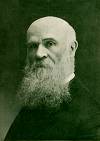 At the death of
Daniel Sylvester Tuttle, Garrett – though by now blind – became
the Presiding Bishop (April 17, 1923-February 18, 1924). Garrett
died in 1924, having served as a Bishop for nearly 50 years!
At the death of
Daniel Sylvester Tuttle, Garrett – though by now blind – became
the Presiding Bishop (April 17, 1923-February 18, 1924). Garrett
died in 1924, having served as a Bishop for nearly 50 years!
New Vigor:
The United States emerged, generally speaking, from the Civil War with new vigor. In a similar way, the Episcopal Church seemed to have a new confidence as well.
- 1861: Transcontinental telegraph line completed
- 1869: Transcontinental railroad completed
- 1880: Population was 50 million – in 1920: 105 million
- 1886: General Convention meets in Chicago – home of the first skyscraper (1885)
- The population was moving into major cities
- The nation was becoming an industrial powerhouse
- There was much poverty in the cities: Over the decades, millions of new immigrants would come to America, most into the cities, where work was to be found and business was being done.
- Episcopal parishes were ready to respond:
- 1871: Women’s Auxiliary to the Board of Missions was organized. Under the guidance of Julia Chester Emery and her sisters, the Auxiliary made real contributions to both foreign and domestic missions
- 1880: Trinity Church Wall Street owned vast tracts of land – and determined to improve housing
- 1883: St George in NYC began an ambitious program for children, a trade school, a gymnasium
- The Order of the Holy Cross, Brotherhood of St. Andrew, both male groups, also organized and carried on an active ministry among the poor and the unchurched
- Alexander Crummell, a black priest who had served for 20 years in Liberia, organized the American Negro Academy – forerunner of the NAACP.
- William Dwight Porter Bliss, rector of a Boston Church, played a major role in the cause of unionism and Christian Socialism.
- 1905: First mission to Chinese opened in San Francisco (by a woman deacon)
- 1910: There were four organizations ministering to the deaf, three temperance societies, one for the advancement of labor, an association for free and open churches, and one dedicated to working with “colored people”
- 1916: The Church produced the Christian Nurture series which included an emphasis on social action.
- 1918: saw the first African-American bishops elected, as Suffragans – an approach that was thought better by the General Convention than having a separate structure for black Episcopalians. Oddly enough, these first bishops were elected in NC and ARK.
Growth:
- Number of Churches doubled between 1880 and 1920. (4151-8365)
- Number of communicants tripled (345,000-1,075,820)
Social Conscience:
A new social conscience was emerging. Signs of this can be seen in the way the Church began to address some issues.
In the opening stages of the Civil War, the first Pastoral Letter of the House of Bishops was issued. It condemned the Civil War even as it continued to hold open the possibility of reconciliation with the PECCSA. This Letter drew on Scripture and the Prayer Book as sources for its teaching. It revealed an understanding that the Church is the guardian of public morality.
In the ensuing decades, with the industrialization of the economy and the growing tension between labor and employers (The US moved from 4th place to 1st in industrial output between 1865 and 1894) the Church became more aware of and responsive to the needs of workers and the poor:
- In 1877 the House of Bishops issued a report that taught that the privileged and the wealthy – and society as a whole – had obligations for providing equal rights to laborers and the poor.
- Charles Hopkins claims that the Episcopal Church was the first major Protestant body to address these issues. (Hood, p. 67)
- Other Pastorals were to follow: In 1886, e.g., the Pastoral suggested that the Church must be a mediator between conflicts between “capital and labor.”
- These instances, and the influence of Bishops on various members of the Church – some of them very rich – must surely have helped shape an new emerging consciousness.
By the turn of the century, the General Convention began forming commissions to study various social problems and to report back to succeeding Conventions on policies to be employed. (Workers rights, relations with Native Americans, etc.)
During this period, a new institution arose: The Church Congress.
- Functioned between 1874 and 1934
- Its point was to bring people together for open discussion of important issues from varying points of view – and for worship and fellowship – manifestly NOT for legislation.
-
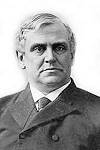 Phillips Brooks, a priest, drawing from a term he picked up
in England, said that the work was to foster a BROAD CHURCH
mentality – a Church that was “liberal and free”. (Brooks was
one of the organizers)
Phillips Brooks, a priest, drawing from a term he picked up
in England, said that the work was to foster a BROAD CHURCH
mentality – a Church that was “liberal and free”. (Brooks was
one of the organizers) - The speakers were impressive and engaged serious ideas, from biblical interpretation and research to evolution, economics, social work.
- And it was a showcase as well for vital new ministries arising from the types of ministries we have reviewed above.
- It was an effort as well to bring about more cohesion and unity of vision in the Church – not to force a watered down faith, but to give everyone – evangelical or Anglo-Catholic – a platform.
- Some of those, like Brooks, who were deeply involved went on to become bishops.
The Congress is widely credited with helping the Episcopal Church avoid doctrinal fights and divisions that were characteristic of other denominations in the wake of the in breaking of “higher criticism.” This was perhaps one of the most important undertakings of the Church as a whole in the last half of the 19th century!
Interest in Christian Unity
There was a great interest in Christian Unity in the Episcopal Church.
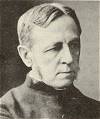 For many, this took the form of a great national church – William
Montgomery Brown (who would become Bishop of Arkansas), William
Porcher DuBose (of Sewanee) and
William Reed Huntington advanced these ideas: it was apparently
the notion that the Episcopal Church could lead a renewal and
reunion of Christianity in a National Church in which there would be
no denominational differences (cf. Church of North India).
For many, this took the form of a great national church – William
Montgomery Brown (who would become Bishop of Arkansas), William
Porcher DuBose (of Sewanee) and
William Reed Huntington advanced these ideas: it was apparently
the notion that the Episcopal Church could lead a renewal and
reunion of Christianity in a National Church in which there would be
no denominational differences (cf. Church of North India).
Huntington in the General Convention 1886 spoke to the House of Bishops and convinced them to adopt what became known as the Quadrilateral: a statement of the basic principles that would guide the Episcopal Church in dealing with other church bodies. These four elements were derived from his own book, The Church Idea, and was adopted by the Bishops. (It was not adopted by the Convention as such, but was influential nevertheless: it was endorsed by subsequent Conventions and incorporated in the BCP 1979.)
The Quadrilateral was later adopted (1888) by the Lambeth Conference. (Because the Convention was held in Chicago, the statement became known as the Chicago-Lambeth Quadrilateral.)
The attitude toward the Quadrilateral opened doors to greater participation by Episcopalians in work with other Christians.
Foreign Missionary Work:
- In China and Japan (1830s) By turn of the century, three dioceses in China and a separate Church in Japan
- In Haiti (1874) Largely made up of expatriate blacks from US "The Orthodox Apostolic Church"
- A priest ordained by Bishop Holly carried the Church to the Virgin Islands in 1897
- In the Philippines Opened as a mission field after the Spanish-American War (1898) Charles Henry Brent became the first Bishop,
- 1901-1918 In Brazil (1890, following revolution in 1889) Lucien Lee Kinsolving, first Bishop in 1898 Formation of Igreja Episcopal do Brasil
- In Hawaii (1902) Episcopal Church assumes responsibility for Hawaii from English Church
- In Mexico (1904)
Sketches of Leadership:
